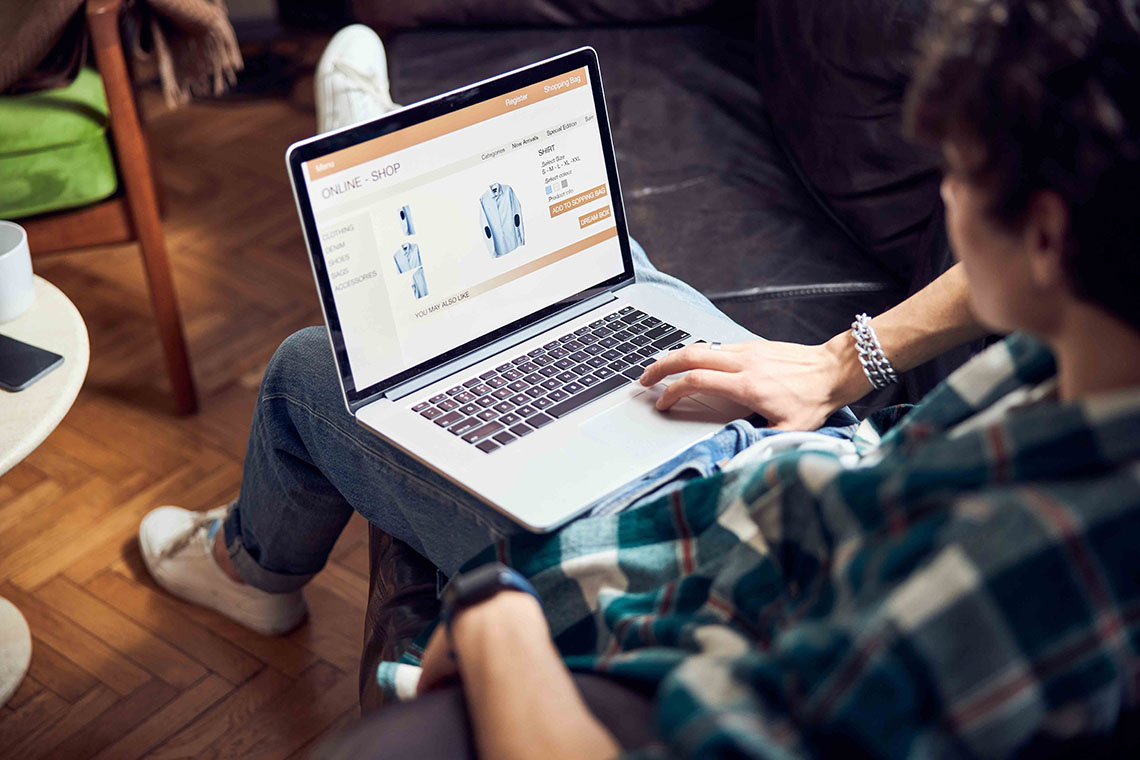You may end up asking yourself: Why would I need UX research and even follow the latest trends?
Research is the inevitable part of UX as such. It is not only the brand, packaging, or price influencing the customers. The experience of searching or shopping online is one of the crucial aspects of falling in love with a brand. A great product requires an understanding of users’ behavior that can be done only by user testing.
Keeping up with the latest trends in UX research might be a useful approach to staying on top of the game but do not forget about what has been already tested. Current UX trends give you insurance before trying something new. First, we’ll try to get a sneak peek at what the future holds for the UX industry, and then we’ll take a look at some of the most recent UX research trends that shouldn’t remain overlooked.
Future of UX research: 8 trends and predictions
The future of UX research is constantly evolving, with trends having either a positive or negative impact on researchers’ approaches to user experience. With so much information the most important ones remain forgotten but thanks to this overview you can always come back to them.
#1. Artificial Intelligence
Artificial intelligence is changing how we do UX research by introducing new tools and methods to learn about how users behave and what they prefer. Moreover, many companies offering user research tools have already incorporated AI features as a part of their solutions. This means researchers and product designers can learn more about how users interact with products and services, what they like, and what frustrates them. By using AI, designers can make products and services that are more user-friendly and meet people’s needs better than ever before.
Some may even argue that the rapid evolution of AI can replace user experience designers in a couple of years. Well, we can’t predict anything about that but we can for sure say that implementing AI can quickly and accurately analyze large sets of data, helping researchers find patterns and trends that were hard to detect before. The increased speed of research thanks to AI is something we are going to see in the future.
#2. Integrating VR and AR into UX research
Virtual Reality (VR) and Augmented Reality (AR) are popular tools in UX research to offer users a more immersive and interactive experience. There are many aspects to be taken care of in the world of VR UX design compared to the real world. However, the opportunities this technology could bring are countless. Likewise, with AR, researchers can create tons of simulations of the environment and bring more extensive insights from user behavior.
UX in VR is a whole different level of immersion and experiencing the product. That’s why designers today are trying a lot of new ideas and implementing things in virtual reality we’ve never even heard of. It’s a whole new world to explore but one thing is for sure, VR and VR design will enhance the industry with countless opportunities for growth.
By using AR in UX research, companies gain deeper insights into user interactions, leading to more engaging and user-friendly experiences for their products and services.

#3. Collaboration
The future of UX lies in the information flow between product teams, designers, programmers, marketers, researchers, and back. Effective flow of information between all departments is crucial. This doesn’t mean tons and tons of meetings or charts, but rather one-to-one or team-to-team cooperation.
The input from all aspects is included in the complex decision-making process. This is especially true in UX. Cooperation and collaboration should include other members of the team, from executives to management. It sounds easier than it is. Building effective pathways for communication takes some time, but you will see when everything clicks together.
#4. Inclusivity and diversity
We are happy to see the world evolving as inclusivity already become a huge part of UX design. Creating products with inclusivity in mind allows for a combination of different perspectives and the creation of diverse user experiences that apply to everyone.
Discrimination shouldn’t be part of UX. The main UX goal of inclusive and diverse design and research is to incorporate all individuals and to solve issues they have. By including a diverse range of users in studies, companies can gain insights into different needs and preferences, leading to more innovative and effective solutions. This can be seen later in better products and experiences for all users. Therefore, there is no room for discrimination. Inclusive and diverse design that reacts to the needs of others is definitely something we’ll see more often in the future.
#5. Accessibility
Another important aspect of UX is finally being spoken of. Accessibility is not just a trend, it’s a completely different upgraded approach to designing modern products which allow us to keep in mind all types of target users with different kinds of abilities and disabilities. Accessibility closely relates to and is a part of the inclusive design process.
The rise of accessibility awareness says a lot about how we start more and more implementing empathy in design decisions and really focusing on making human-centered products. People with disabilities form one of the largest user groups in the world and ignoring their needs is not acceptable for a modern company.
#6. Biometrics technology
Biometrics tools in UX research can help you measure the physiological and behavioral responses of users in order to improve the user experience. It provides designers and design teams with thorough feedback by tracking eye movements, heart rate, and facial expressions.
Despite the fact that these tools are time-consuming and expensive, they are very helpful techniques to gain deep insights. There is still a lot to explore in this area but it has a big potential to significantly improve and streamline user experience research.
#7. Adapting to the new generation of users
Gen Z has been changing the products and the way we interact with them for a couple of years now. And the companies are starting to adapt to the needs and wants of the new generation. They have different user habits and expectations from modern products and there’s been a lot of research done in that sphere.

Gen Z expects everything to work as simply as possible and they also get distracted quickly. This is why a whole different approach is required when designing products for them as a target audience. Not to mention, due to a difference in communication channels and style, the research shows that the recruiting process for their demographic is completely opposite to what we, researchers, are used to.
#8. Sustainability in UX research
Sustainability in UX research involves conducting studies in a way that minimizes environmental impact and maximizes long-term success. This includes the use of digital tools such as remote usability testing that can be performed from anywhere. Prioritizing sustainability not only reduces the ecological footprint but also promotes a more meaningful and lasting user experience for companies.
Applicable current trends
There are the top 3 trends that influenced our work as a team the most:
➡️ Mixed method research
Many UX researchers have realized that having either qualitative or just quantitative data is no longer enough. A single questionnaire is not enough. By implementing mixed-method research in their studies researchers are able to uncover what happened, why it happened, and how to solve it.

Being able to combine various usability testing methods will help to ask the right questions and get real answers. The main role of user experience researchers is to apply quantitative and qualitative research methods in order to understand complex reality. How to do that?
First, ask the right questions before, after, and during the study. Find out what your respondents think about the product, how they felt during the task, what was too complicated, and how they wish you could improve it.
📌 For that matter, check out our article on how to ask good usability testing questions.
Simply said, we need both qualitative and quantitative data to uncover deeper insights.
💡One example of the application of mixed methods research in UX design is the use of the survey tool and website usability testing tool. While user surveys offer valuable data on user preferences and behaviors, website usability testing provides insights into user experiences and attitudes toward a product or service. By combining both methods, businesses can gather holistic well-rounded insights for a better understanding of the wants and needs of users.
➡️ Customer insights for smarter decision-making
It seems that recruitment of good participants can become a big problem for businesses nowadays. This especially affects new and smaller firms, the ones on a tight budget.
Consumer insights are essential to helping improve a company’s process of decision-making. This becomes particularly challenging for new and smaller firms operating on a tight budget or for well-established cooperations with budget challenges.
To overcome this issue, many companies are turning to direct user involvement in research to enhance their products or services. Building a community that is willing to help and participate in the research that leads to the improvement of the product or service is a prominent trend in UX research.
The easiest way to turn your website visitors into testers is by using the UXtweak Recruiting Widget. By applying the widget on the website, your potential respondents will receive a pop-up chat with a message where you can ask them to participate in the study for a small reward. Don’t forget to offer a small reward for the participation. A good incentive (for example a coupon or a gift card) will motivate more people to complete your study.

Additionally, there are tons of other free recruiting methods that can help you get participants for your study. And if this doesn’t work out, there’s a huge trend on User Panels among modern usability testing tools.
Platforms like UXtweak understand how hard it can be to gather the right participants for your study. With UXtweak, researchers can get a budget-friendly solution that allows them to recruit targeted testers in just a few clicks.
➡️Remote unmoderated testing
The global pandemic changed the game for UX research. The possibilities for moderated testing were reduced to a minimum. Remote usability testing has been on the rise for the last couple of years and will continue to grow in the future.

This type of testing doesn’t require the presence of a researcher which makes it accessible to everyone, everywhere. The only thing you’ll need to perform remote UX research is a good online usability testing tool at hand.
Here are some reasons why you may want to choose unmoderated testing over a moderated one:
- budget-friendly
- less time consuming
- high-quality data
- possibility to reach real users
🐝To learn more about the differences between moderated and unmoderated types of study, check out this comparison: Moderated vs. Unmoderated
What will stay the same in UX research?
We believe that the present and future of UX research are in the hands of the team. It is the quality of the team that matters the most. Are they inspiring, confident, motivated communities? The mindset of researchers and their desire to learn is the key. Support your team members, and create an effective communication flow and a creative environment.
The trends we have revealed to you may not be immediately applicable to your UX research. Therefore, if you want to be sure, check out our UXtweak platform and create a profile for free.








